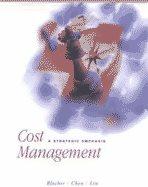Question
Today is January 1, 2023, and you have just picked up the paper and see an opportunity to purchase a building for $ 20,000,000 and
Today is January 1, 2023, and you have just picked up the paper and see an opportunity to purchase a building for $ 20,000,000 and lease it back to the current tenant. So, you decide to call the current tenant, and have learned that the tenant would like to lease the building back for ten years, with an option to buy the building back at fair value at that point in time. Prior knowledge tells you that similar buildings have an economic life of thirty years. The tenant plans on adopting the new lease accounting rules today, and would like to report the lease as an operating lease under the new accounting rules. Because the tenant does not care to apply any judgement, they will use the previous accounting standards as a basis for assessing whether classification criteria are met. The client would like the first annual lease payment to be due on December 31, 2023. Given their current state, the current tenant of the building has an incremental cost of borrowing of 12%. If you purchase the building, you will be entitled to depreciate it. For sake of simplicity, assume that for tax purposes the building is depreciated using the straight line method over a 32-year period with a salvage value of zero.The current tenant has agreed to pay all maintenance, property taxes, and any other costs of ownership. You believe that a building of the type being discussed will appreciate at a rate of 2% per year. If you sell the building at any point in time, you will pay capital gains income tax at a rate of 20% of the difference between the selling price and your remaining cost basis (i.e. the un-depreciated portion of the initial cost). All other income and benefits is taxed at a rate of 40%.
Given the information above, please complete the following:
A. (5) Assuming that you purchase the building with cash, construct a lease that
generates a pre-tax internal rate of return of 10% per year, satisfies the objectives
of the client, and has the minimum annual lease payment.
B. (2) Given the lease that youve constructed in Part A, determine the after-tax
cash flows for each year for the lessor each year. What is the internal rate of
return for the after-tax cash flows?
C. (3) Given your answer to Part B, by how much does your after-tax Internal Rate
of Return increase if you borrow 80% (i.e. $ 16,000,000) of the cost of the
building, with a ten-year, 8% loan with equal annual payments due on
December 31 of each year?
Step by Step Solution
There are 3 Steps involved in it
Step: 1

Get Instant Access to Expert-Tailored Solutions
See step-by-step solutions with expert insights and AI powered tools for academic success
Step: 2

Step: 3

Ace Your Homework with AI
Get the answers you need in no time with our AI-driven, step-by-step assistance
Get Started


